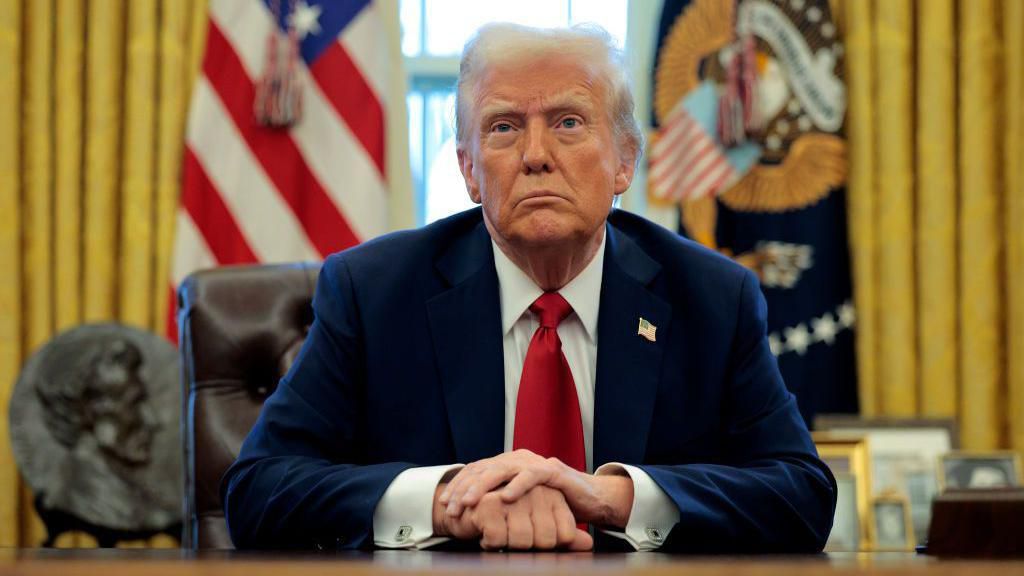Fed's Crossroads: Caution Prevails Amid Tariff Turmoil
The Federal Reserve’s April 2025 deliberations have crystallized into a stark message: further interest rate cuts will not come easily. While tariff disputes dominate the economic landscape, policymakers are split on how aggressively to respond—a tension that could redefine the path of U.S. monetary policy. At the heart of the debate lies a question: Can the Fed afford to cut rates in a high-inflation, low-growth world?

Governor Christopher Waller has emerged as a pivotal voice advocating under extreme tariff scenarios. His analysis hinges on two paths:
1. Here, Waller anticipates a recession-like slowdown, with unemployment rising to 5% by 2026 and inflation spiking to 5%. Even in this inflationary environment, he argues that , urging cuts to preempt a deeper downturn.
2. With milder inflation (peaking at 3%), Waller advocates patience, delaying cuts until later in the year.
However, Waller’s framework faces a critical caveat: . Despite labeling tariff-driven inflation as “temporary,” he admits the Fed’s credibility hinges on proving this. A misstep could erode trust in its ability to control prices—a risk that demands caution.
Chair Jerome Powell’s April 4 statement underscored a , emphasizing the Fed’s reliance on data to navigate tariff uncertainty. His key points:
- Tariffs threaten both employment and price stability. A simultaneous surge in inflation and unemployment could force an impossible choice: raise rates to combat inflation or cut them to boost growth.
- Powell dismissed immediate Fed intervention, even as markets reacted sharply— post-speech—highlighting investor anxiety over prolonged uncertainty.
- Powell warned that prolonged tariffs could permanently lower productivity, reshaping the economy’s long-term growth trajectory. This echoes historical parallels to the Smoot-Hawley tariffs of 1930, which exacerbated the Great Depression.
Economic indicators as of Q1 2025 reveal a mixed picture:
- Unemployment remains at 4.2%, with 228,000 jobs added in March.
- Headline CPI dipped to 2.4%, but core measures (2.8% CPI, 2.7% PCE) remain elevated.
- GDP growth has slowed to below 2.4%, with businesses holding back on investment amid tariff uncertainty.
These figures fuel internal Fed disagreements. While Waller and Powell stress patience, argue that inflation risks still outweigh growth concerns—a stance delaying consensus on cuts.
Investors must grapple with two realities:
1. The Fed will likely wait for clear evidence of tariff-driven growth damage before acting. A recession or a sustained unemployment rise could tip the scales.
2.
- (e.g., healthcare, consumer staples) may outperform.
- (e.g., tech, real estate) could struggle if the Fed delays cuts.
The Fed’s April 2025 stance is best summarized as . Policymakers are neither locked into further hikes nor eager to cut rates indiscriminately. Key triggers for action include:
- , signaling a recession.
- , undermining Waller’s “temporary” thesis.
- , as businesses freeze amid tariff uncertainty.
With the Fed Funds Rate at 5.25%—its highest since 2001—the bar for cuts is high. Investors should prepare for a prolonged wait, with markets likely to remain volatile until clarity emerges. As Powell noted, the Fed’s tools are blunt instruments in a world of self-inflicted trade wounds. For now, caution reigns.
- May 15, 2025 (for internal debates on tariff impacts).
- April Unemployment Rate: Due May 4, 2025 (target: below 4.5%).
- Core PCE Inflation Report: April 30, 2025 (watch for deviations from the 2.7% March level).











:max_bytes(150000):strip_icc()/GettyImages-2212788656-7f3fc81cc8504178a4eef3c7a3083c21.jpg)
